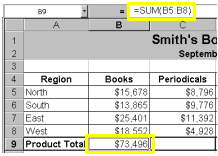

Set DeleteRng = Application.InputBox("Delete Range", xTitleId, Type:=8) Set InputRng = Application.InputBox("Range :", xTitleId, InputRng.Address, Type:=8) I'm posting the script here, with a small usability improvement (conditionally removed the redundant first prompt from the original post): Sub DeselectCells() It does include an extra prompt, but you can deselect an arbitrary number of cells/selections at once (instead of deselecting only the active cell or area)

If Application.Intersect(Area, ActiveCell) Is Nothing ThenĪ more robust way for deselecting multiple cells is described in this ExtendOffice article. This procedure will remove the Area containing the Active Cell from the Selection. If StrComp(R.Address, ActiveCell.Address, vbBinar圜ompare) 0 Then Read on to determine which type of cell reference to use for your formula. Excel uses two types of cell references to create formulas. This procedure will remove the Active Cell from the Selection. Relative & Absolute Cell References: by Karyn Stille.
#Making a cell absolute in excel keyboard shortcut how to
They are available to all open workbooks in Excel. Here we discuss how to create Absolute Cell Reference along with excel examples and downloadable excel templates. Your best bet would be to add these to your Personal Macro workbook so that

All other cells in the Selection will remain selected. This page describes to VBA procedures, UnSelectActiveCell and UnSelectCurrentArea that will remove the Active Cell or the Area containing the Active Cell from the current selection. However, if you select a cell or area by mistake, there is no built in way to remove that from the selection without losing the entire selection and having to start over. By using the SHIFT and/or the CTRL keys you can select non-contiguous ranges.


 0 kommentar(er)
0 kommentar(er)
